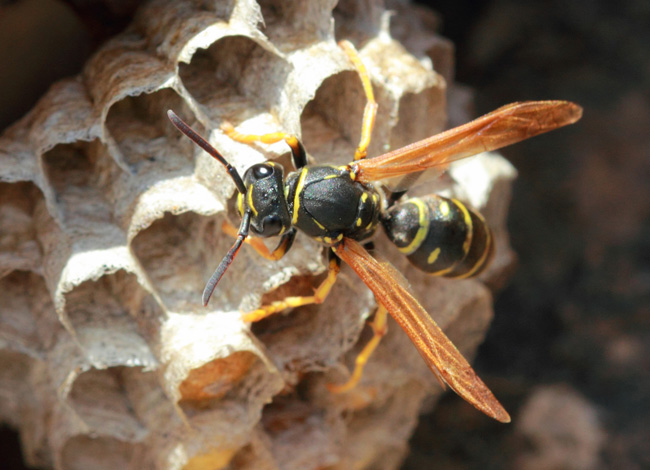Wasp hiding places and hidden nests.

Wasps are small insects that can easily fit between small cracks and holes. Once a nest has developed, wasps can be difficult to remove. They will find any way they can to come and go from the area. A lot of the time wasps will probably build nests in places that are hidden from the elements and the threat of humans. Sometimes you will spot nests hanging from trees and soffits making it simple to remove the problem. But what happens when wasps are in difficult to get to spaces?
Wasp nest in a tree
A common place for wasp nests are in trees. They will build nests in a hole or under the bark of a tree. These nests can be more difficult to identify if you are not fully paying attention to wasp activity.
A wasp nest is made of chewed wood that gives the walls that papery look. The wasp species mud daubers will construct their nests out of clay or mud and they look quite different from a traditional nest. Queen wasps begin preparing the nest in the spring and lay their first batch of eggs. These eggs quickly turn into workers and they take over the construction of the nest.
Do wasps make nests in the ground?
Some species of wasps will make nests just under the ground. These are also difficult to identify unless you keep track of insect activity. The nest is usually a small bump sticking about the surface of the ground. It’s identifiable from the amount of wasps hanging around the area.
Usually by mid summer, a wasp nest is fully developed and recognizable. To spot a wasp nest, follow their flight path and watch where the majority of them go. The most wasp activity is usually seen in early morning and late afternoon. Wasps will leave the nest at these times to collect resources and return at the end of the day.
Wasps in my wall, under my siding or hanging from roof.
Many wasp species have had to develop with their surroundings and make an effort to adapt to the advancement of humans and urbanization. This means sometimes they will become more resourceful in where the build their nests. For the most part, if there is enough room for wasps to develop a full nest, they will find a way to get in.
In outside walls or under the house siding are becoming more common places to find large wasp colonies. Especially in older buildings, cracks and holes may have started to form from natural wear and tear. These are open invites to wasps to construct nests in the most hidden places around your property.
What to do if I have wasps under my siding or wall?
The first thing you will need to do is confirm you have a wasp problem. The biggest sign of a wasp nest is a lot of activity in a concentrated area. Watch the wasps and try and see where they are coming and going from. Nests under any type of wall are really difficult to remove and control. The only real option you might have is to call a pest control professional. They will likely come and remove the nest.
Hamilton wasp removal.
Wasps can be very aggressive and dangerous. It’s best to keep you distance. A pest control professional will have the appropriate equipment to safely move the nest. If you discover any signs of a wasp nest make sure to contact Truly Nolen Pest Control.
